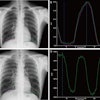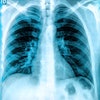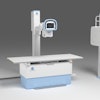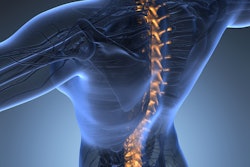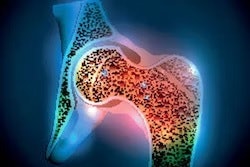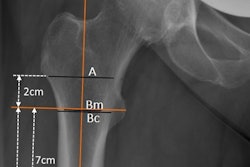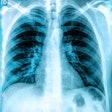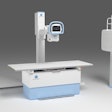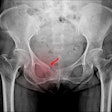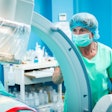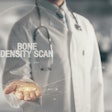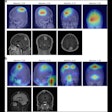Three screening tools recommended by the U.S. Preventive Services Task Force (USPSTF) are suboptimal for identifying women who may be at risk for osteoporosis, according to a study published March 18 in JAMA Network Open.
In postmenopausal women ages 50 to 64, the tools performed poorly in identifying the disease, noted Henry Zheng, a PhD student at the University of California, Los Angeles, and colleagues.
“Findings of this study suggest that the performance of these three tools was suboptimal in identifying osteoporosis defined by lowest [bone mineral density] at the hip or lumbar spine in younger postmenopausal women," the group wrote.
Osteoporosis is defined by a bone mineral density (BMD) T-score of -2.5 or lower based on dual-energy x-ray absorptiometry (DEXA) scans. The USPSTF recommends DEXA scans in women over 65, but in postmenopausal women under 65, only if they’ve been deemed to have low BMD based on a clinical screening tool, the authors explained.
However, little information is available regarding the performances of these tools, the authors noted – specifically the Osteoporosis Index of Risk (OSIRIS), the Osteoporosis Risk Assessment Instrument (ORAI), and the Osteoporosis Self-Assessment Tool (OST).
To bridge the knowledge gap, the researchers analyzed how well the tools performed at identifying the presence of osteoporotic BMD in 6,067 younger postmenopausal women. The primary outcome was osteoporosis defined by a BMD T-score of -2.5 or lower at one or more of three anatomical locations: the femoral neck, total hip, and/or lumbar spine. The tools were evaluated via area under the receiver operating characteristic curve (AUC) at published score cutoffs: scores of <1 for OSIRIS, >8 for ORAI, and <2 for OST.
Baseline osteoporosis was present in 857 participants (14.1%) at any of the three anatomical sites and in 300 participants (4.9%) at the femoral neck. The AUC for predicting osteoporosis at any site was 63.3% for OSIRIS, 66.3% for ORAI, and 65.4% for OST, the researchers reported.
“We observed less than optimal performance (including discrimination), even after recalibration, in identifying osteoporosis as defined by a BMD T-score of -2.5 or lower at any 1 of 3 skeletal sites,” the group wrote.
Screening is essential to reducing individual and societal burden of osteoporosis and related fractures, and this study ultimately casts some doubt on the USPSTF’s recommendation to use these tools in clinical practice, the group wrote.
“Future studies should examine whether alternative approaches, such as machine learning, can better identify younger women as appropriate candidates for osteoporosis screening,” the researchers concluded.
The full study is available here.
